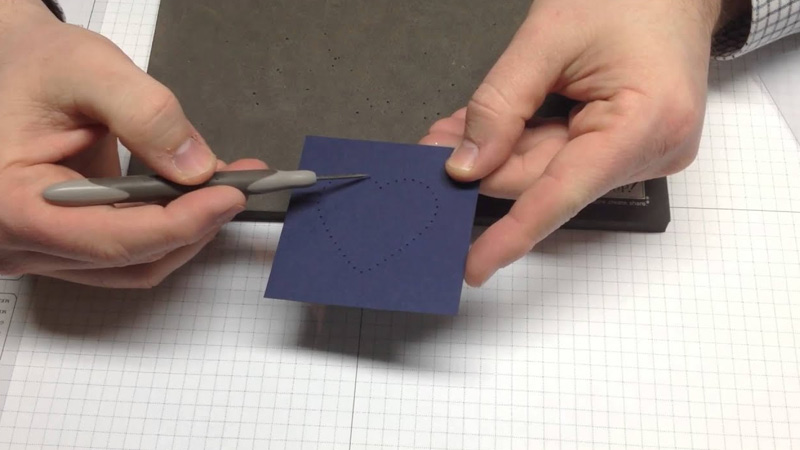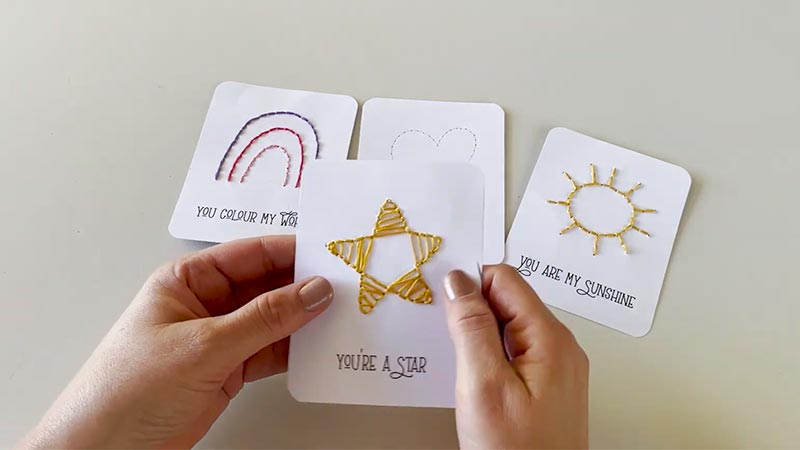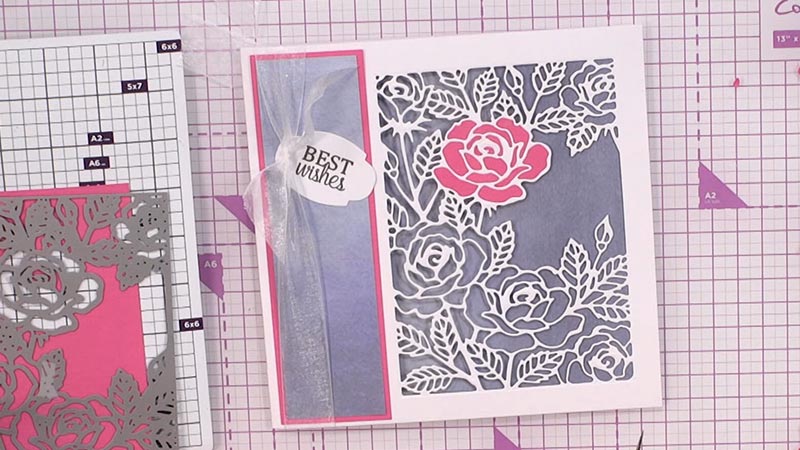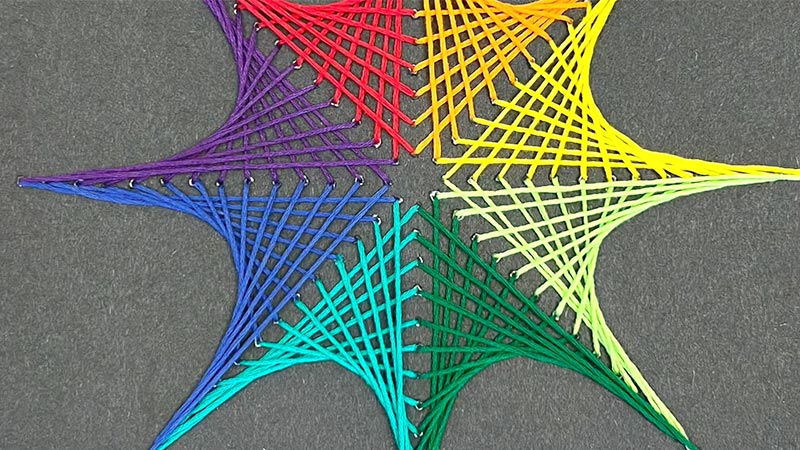Paper piercing craft is a captivating and intricate art form that transforms ordinary paper into exquisite works of three-dimensional beauty.
This craft involves the delicate process of puncturing or perforating paper, vellum, or parchment to create stunning, lace-like designs and intricate patterns.
From greeting cards to home décor, paper piercing is a versatile creative outlet that offers a wide range of opportunities for personal expression.
Crafters use specialized tools and templates to guide the placement of holes, and through the interplay of light and shadow, they achieve an illusion of depth and texture.
As an accessible and therapeutic hobby, paper piercing continues to inspire artistic enthusiasts to craft unique and personalized pieces of paper art.

History of Paper Piercing
The history of paper piercing, also known as parchment craft, can be traced back to ancient civilizations. While the exact origins are difficult to pinpoint, the craft has a rich history that spans centuries.
Parchment craft is believed to have its roots in regions such as Egypt and the Middle East, where it was used for decorative and functional purposes.
The delicate art of piercing parchment, vellum, or paper to create intricate patterns and designs gained popularity throughout the medieval period in Europe, particularly among monastic scribes and illuminated manuscript creators.
The craft continued to evolve over time, with different cultures contributing to its development. By the 17th century, it had become a fashionable pastime among the European nobility.
The craft experienced a revival during the Victorian era, with enthusiasts creating ornate cards and decorative items.
In the modern era, parchment craft has adapted to contemporary tastes and continues to thrive as a beloved form of paper art, with enthusiasts worldwide creating intricate and beautiful designs for various creative projects.
The craft’s enduring appeal lies in its ability to combine tradition and innovation, offering a connection to centuries of artistic heritage while allowing for contemporary expression.
What Is Paper Piercing Craft?

Paper piercing craft, also known as paper piercing or parchment craft, is a versatile and intricate form of paper art.
It involves creating delicate and decorative designs by piercing holes or making perforations in paper, vellum, or parchment to produce stunning, three-dimensional effects.
This craft is often used to make greeting cards, scrapbook pages, and other paper-based projects.
Here are the key aspects of paper piercing craft:
Intricate Designs
Paper piercing is all about the fine details. Crafters can create elaborate designs, ranging from delicate lace-like patterns to intricate floral motifs.
These designs can be inspired by various themes, such as nature, geometric shapes, or even personalized messages, making it a versatile craft for various occasions.
Versatility
Paper piercing can be applied to a wide range of paper types, each offering its unique qualities.
Cardstock provides a sturdy and colorful base, while vellum and parchment offer a translucent and delicate backdrop. The choice of paper can significantly influence the final appearance of the project.
Three-Dimensional Effects
Achieving a three-dimensional effect is a hallmark of a paper piercing craft. By strategically piercing the paper and adding shading or color through techniques like embossing, crafters can make elements appear raised or sunken, giving a lifelike quality to their creations.
Affordable Materials
As a relatively budget-friendly craft, paper piercing appeals to many hobbyists. The essential tools, such as piercing mats, styluses, and templates, are readily available and reasonably priced.
This affordability ensures that anyone with an interest in the craft can get started without a significant investment.
Precision and Patience
Successful paper piercing requires patience and precision. Crafters must be meticulous in their approach, ensuring that the holes are evenly spaced and that the design is executed with accuracy.
The sense of accomplishment that comes with creating a finely detailed piece is a reward in itself.
Embellishments
To enhance their projects, crafters often incorporate embellishments like brads, eyelets, ribbons, or rhinestones.
These additions not only add visual interest but also provide opportunities for further personalization. The choice of embellishments can help convey the desired aesthetic or theme.
Range of Techniques
Beyond the basic piercing technique, paper piercing encompasses various methods, such as pricking, embossing, and even cutting.
These techniques offer diverse ways to manipulate the paper and create a wide range of visual effects. Combining these techniques can lead to highly intricate and layered designs.
Templates and Patterns
Templates and patterns are invaluable tools in paper piercing. Crafters can either purchase ready-made templates or create their own.
These templates guide the placement of holes and help crafters visualize their designs, making the process more accessible for beginners and inspiring more creativity in advanced practitioners.
Personalization
Paper piercing craft provides an excellent platform for personalization. Crafters can tailor their projects to suit specific occasions, such as birthdays, anniversaries, or holidays.
Personalized messages, names, or dates can be incorporated into the designs, making each piece a unique and heartfelt creation.
Relaxing and Therapeutic
Many enthusiasts find that paper piercing is a relaxing and therapeutic hobby. The repetitive yet intricate nature of the craft can have a calming effect, allowing crafters to unwind, de-stress, and escape into a world of creativity. It’s an excellent way to find solace and focus in a busy world.
Advantages of Paper Piercing Craft

Paper piercing craft offers several advantages to individuals who engage in this art form.
Here are some of the key benefits of paper piercing craft:
Creative Expression
Paper piercing is a canvas for creative expression. Crafters can design intricate patterns, lace-like details, and intricate motifs that reflect their unique style and personality.
It’s an art form that allows for endless possibilities, whether you’re creating delicate floral patterns or elaborate abstract designs.
Fine Motor Skill Development
Engaging in paper piercing requires precision and careful attention to detail. As crafters work with small tools to create precise holes and delicate designs, they naturally improve their fine motor skills.
This is especially valuable for individuals of all ages, including children who are developing their dexterity.
Low Cost and Accessibility
Paper piercing is one of the more budget-friendly hobbies. The basic tools, like piercing mats, styluses, and templates, are readily available and affordable.
This accessibility ensures that virtually anyone can take up the craft without a significant financial investment.
Stress Relief
The repetitive and intricate nature of paper piercing can be deeply relaxing and therapeutic.
As crafters immerse themselves in the creative process, they often find that it helps reduce stress and promote mindfulness. It’s a form of art therapy that allows individuals to unwind and focus on the present moment.
Personalized Gifts
Paper-pierced creations can be deeply personal. Crafters can design and craft personalized gifts for special occasions, such as birthdays, weddings, and anniversaries.
Handcrafted cards, framed art, or custom designs carry a heartfelt touch that store-bought items can’t replicate.
Versatility in Projects
Paper piercing is incredibly versatile, and suitable for a wide range of projects. Whether you’re making greeting cards, scrapbook layouts, wall art, or even intricate lampshades, the possibilities are endless. This adaptability allows crafters to explore different forms of artistic expression.
Three-Dimensional Effects
One of the standout features of paper piercing is its ability to create three-dimensional effects.
By varying the depth and density of pierced holes and using techniques like embossing, crafters can give their creations a lifelike, textured quality. The resulting visual impact is captivating.
Skill Development and Learning
Crafters continuously learn and develop their skills through paper piercing. They can explore a variety of techniques, experiment with different materials, and expand their artistic repertoire.
The process of constant learning and improvement can be intellectually stimulating and highly satisfying.
Social Engagement
Many enthusiasts join crafting groups, participate in workshops, or engage in online communities dedicated to paper piercing.
This social aspect adds an element of community and camaraderie to the craft, fostering connections with others who share similar interests.
Sustainability
Paper piercing aligns with sustainability principles. It generates minimal waste, especially when utilizing paper scraps and leftovers from other projects. This eco-friendly approach can contribute to a more environmentally conscious lifestyle.
Tips for Beginners

Starting with paper piercing crafting can be both enjoyable and rewarding.
Here are some valuable tips to help beginners get started and enjoy a successful journey into this intricate art form:
Gather Essential Supplies
Begin by acquiring the necessary supplies. You’ll need piercing tools (stylus or pricker), piercing mat, paper (vellum, parchment, or cardstock), templates or stencils, and a light source to see your design clearly.
Start with Simple Patterns
As a beginner, it’s best to start with straightforward and uncomplicated patterns. Basic geometric shapes, simple flowers, or straight lines can be excellent choices to build your skills and confidence.
Practice on Scrap Paper
Before working on your main project, practice on scrap paper. This helps you get a feel for the tools and allows you to refine your technique.
Use Templates and Stencils
Templates and stencils are invaluable for beginners. They guide the placement of holes and provide structure for your designs. Start with pre-made templates and gradually progress to creating your designs.
Choose the Right Paper
Experiment with different types of paper to see which works best for your projects. Vellum offers a translucent effect, while parchment and cardstock have their own unique qualities. Consider paper weight and opacity for your specific design.
Lighting Matters
Adequate lighting is crucial. A well-lit workspace will help you see your design clearly and ensure precise hole placement. Consider using a lightbox or working near a bright window during daylight hours.
Maintain Consistency
Consistency in hole spacing and size is key to achieving clean and attractive designs. Use a ruler or a guide to keep your holes evenly spaced.
Invest in Quality Tools
Quality piercing tools and mats can make a significant difference in your experience. Well-made tools are more comfortable to use and provide better results.
Patience and Precision
Be patient and work with precision. Rushing through a project can lead to mistakes. Take your time to ensure accurate hole placement and achieve the desired results.
Embrace Mistakes
Mistakes happen, especially when you’re starting. Instead of getting discouraged, view them as opportunities to learn and improve. You can often incorporate small mistakes into your design or use them as a creative feature.
Explore Different Techniques
Paper piercing involves various techniques, including pricking, embossing, and cutting. Experiment with these techniques to create different effects and textures in your designs.
Find Inspiration
Look for inspiration in books, online tutorials, and other paper piercing enthusiasts. Studying the work of experienced crafters can provide ideas and guidance for your projects.
Join a Community
Consider joining a paper piercing community or attending local crafting workshops. Engaging with other enthusiasts can be a great way to learn, share experiences, and get feedback on your work.
Personalize Your Projects
Put your unique stamp on your creations. Personalize your designs with special messages, monograms, or themes that resonate with you.
Have Fun
Most importantly, remember to have fun. Paper piercing is a creative and enjoyable hobby, so let your imagination flow and enjoy the process of crafting.
FAQS
Is paper piercing the same as paper cutting or origami?
No, paper piercing is distinct from paper cutting and origami.
Can I use any type of paper for paper piercing?
While you can experiment with different types of paper, traditional choices for paper piercing include vellum, parchment, and cardstock.
What’s the difference between paper piercing and quilling?
Paper piercing and quilling are distinct techniques. Paper piercing involves perforating paper to create designs, while quilling is the art of rolling and shaping strips of paper to form decorative patterns and shapes, such as coils and spirals.
Is paper piercing suitable for children and beginners?
Yes, paper piercing is an accessible craft for beginners and can be suitable for children with proper supervision. It’s a great way to develop fine motor skills, creativity, and patience.
What are the maintenance requirements for paper piercing tools?
Paper piercing tools should be kept clean and free from residue, as this can affect the precision of your work.
Regularly wiping and sharpening your piercing tools can help maintain their performance and longevity.
Last Words
Paper piercing craft, with its intricate designs and centuries-old history, is a captivating and versatile artistic endeavor.
This delicate art form, often practiced on parchment, vellum, or paper, allows enthusiasts to express their creativity, develop fine motor skills, and find solace in its therapeutic nature.
The ability to create three-dimensional effects and personalized designs makes paper piecing a timeless and engaging craft. Its accessibility, low cost, and minimal environmental impact further enhance its appeal.
As a medium that bridges tradition and innovation, paper piercing continues to inspire both beginners and seasoned crafters, fostering a sense of community and creativity that transcends time and culture.
Leave a Reply